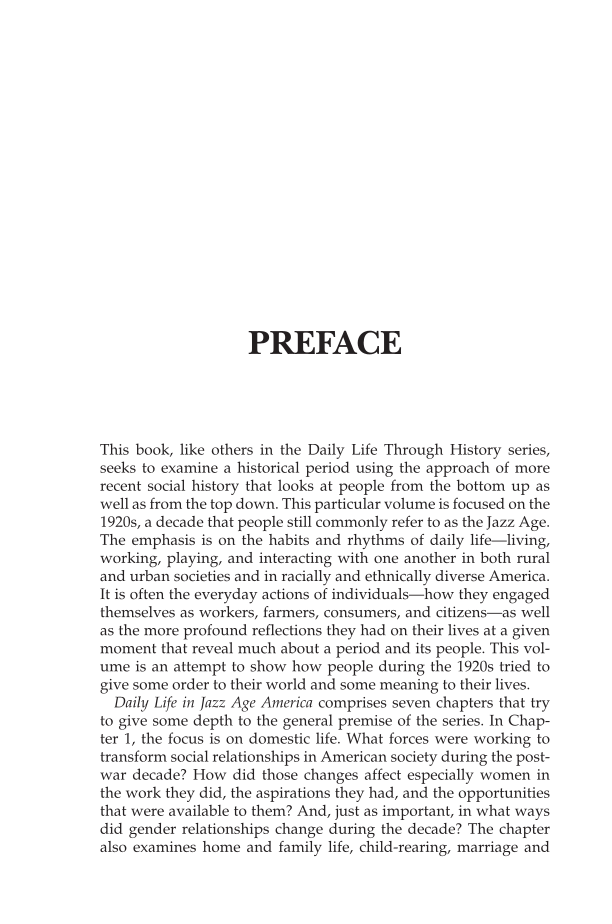This book, like others in the Daily Life Through History series, seeks to examine a historical period using the approach of more recent social history that looks at people from the bottom up as well as from the top down. This particular volume is focused on the 1920s, a decade that people still commonly refer to as the Jazz Age. The emphasis is on the habits and rhythms of daily life—living, working, playing, and interacting with one another in both rural and urban societies and in racially and ethnically diverse America. It is often the everyday actions of individuals—how they engaged themselves as workers, farmers, consumers, and citizens—as well as the more profound reflections they had on their lives at a given moment that reveal much about a period and its people. This vol- ume is an attempt to show how people during the 1920s tried to give some order to their world and some meaning to their lives. Daily Life in Jazz Age America comprises seven chapters that try to give some depth to the general premise of the series. In Chap- ter 1, the focus is on domestic life. What forces were working to transform social relationships in American society during the post- war decade? How did those changes affect especially women in the work they did, the aspirations they had, and the opportunities that were available to them? And, just as important, in what ways did gender relationships change during the decade? The chapter also examines home and family life, child-rearing, marriage and PREFACE
Document Details My Account Print multiple pages
Print
You have printed 0 times in the last 24 hours.
Your print count will reset on at .
You may print 0 more time(s) before then.
You may print a maximum of 0 pages at a time.


























































































































































































































































































